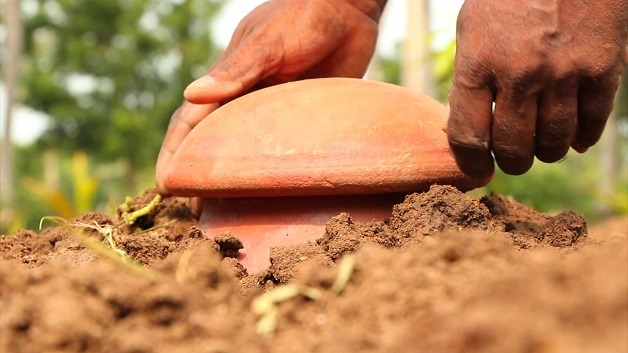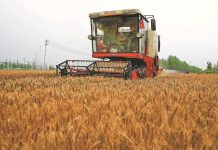ISLAMABAD: Agricultural experts opine that to turn Pakistan’s vast deserts into productive ones, pitcher irrigation/permaculture is the best choice and it must be popularized with a proper follow-up of government agencies for the socio-economic uplift of poor communities living there.
Talking to WealthPK, Executive Director Centre for Rural Change (CRC) Saleh Mangrio from Hyderabad, Sindh said, “Although the pitcher irrigation technique is old, it worked wonders in the desert of Chotiari reservoir, turning it into an economic oasis. In 2012, the CRC launched this project with the coordination of the World Wildlife Fund (WWF), the United Nations Development Programme (UNDP) and GEF (Global Environment Facility) Small Grants Program, while the Sindh Agricultural University, Tando Jam coordinated for technical inputs. It was properly followed till 2015 to the proper adaptability.
The main object of the program was to provide a sustainable livelihood to the poorest people in the water-scarce areas so that they may cope with the bitter economic conditions, malnutrition, and food security through capacity-building to make their barren lands cultivable. Female community members were especially made an active part of the program. For this purpose, first of all, a hand pump was installed. It was a challenging task there, as water was 200 to 250 feet deep in that sandy region. It was further used to fill the buried pitchers to grow food plants and vegetation. People were trained in land preparation to bury the pitchers, to make rows for plantation, to paint the pitchers (making them less porous), etc.
Along with the traditional plantation of food-providing vegetation, 15 to 20 plants/seeds of other fruit plants, i.e., guava, mango, chico, lemon, and multiple vegetables, were provided so that they would be able to get their own food and sell the excess. Half an acre of the land was prepared in which specific rows were allocated to each household to care for and reap the outcrop. About 300 people from 25 to 30 families successfully benefitted. The project was successfully supervised up to 2015 during which the people learned thoroughly learned the pitcher irrigation technique.
In these areas, rain normally occurs every five years and drought every three to four years. Saleh insisted that the government could make the desert people’s lives sustainable by providing them with solar water pumps, irrigation pitchers, free seeds of fruits, vegetables and fodder (so that they may use the dried fodder during the draught), training and scheduled follow-up, etc. People can also be trained to store the rainwater in a better way, he added.
Saleh said since these people were uneducated, they needed regular motivation. The government must make it binding on the social servicing agencies to continue the monitoring for at least four to five years more, even after the rollback of such project. This will help keep their morale high as a psychotherapeutic technique. Gradually, they will adopt this change by properly getting its economic value and solution to their own food needs.
Discussing with WealthPK the importance of pitcher plantation in the desert areas of Pakistan, Deputy Director Farm Water Management, Chakwal, Muhammad Waris Malik quoting an old saying “Engineering is nothing but common sense,” said pitcher irrigation was an ancient Persian technique that involved less cost and was ideal to adopt in sandy/riverain regions. In this method, the whole pot is buried into the earth away from the plant roots except its opening which is covered after being filled with water. This technique protects water from evaporation and saves the pitcher from mud that blocks pores.
Usually, a pitcher lasts for at least a year or more if not broken. A large area in Pakistan consists of deserts where sustainable livelihood and food security are alarming. Although in many areas, people are successfully using this technique, still a lot of awareness is needed to popularize it so that the people would be able to meet their economic and food needs. The government must facilitate such communities with solar-operated water pumps, pitchers, seeds, training, and most of all regular capacity-building follow-ups till they fully understand its value.
Other than the water-deficient areas, it is also ideal for small-scale farmers. It helps save about 98% of water from evaporation and costs not more than Rs4,500 per hectare. The number of pitchers needed per hectare varies according to the crop type.




